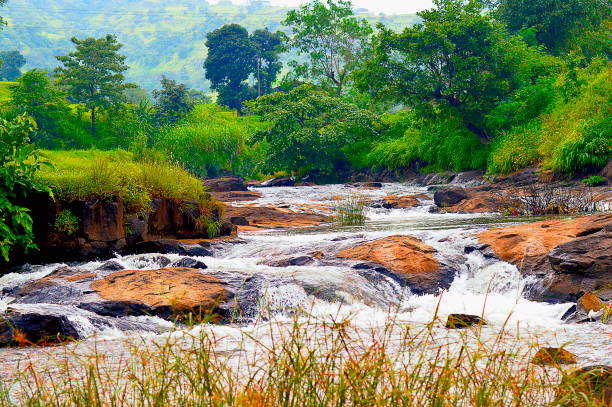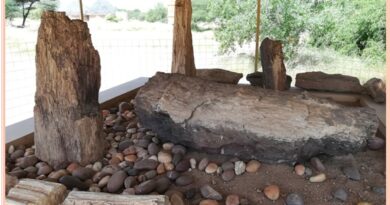Bhimashankar Jyotirlinga: A Sacred place in the Heart of the Sahyadris
Bhimashankar Jyotirlinga
Bhimashankar Jyotirlinga is one of the twelve Jyotirlingas, considered the most sacred abodes of Lord Shiva. Located in the Pune district of Maharashtra, India, the Bhimashankar temple is nestled in the Sahyadri hills, surrounded by dense forests and scenic landscapes. The temple is an important pilgrimage site that attracts thousands of devotees and tourists annually. According to Hindu mythology, Bhimashankar is associated with the demon Tripurasura. It is believed that Lord Shiva manifested himself in the form of a Bhima (huge) Linga to defeat the demon, thus the name Bhimashankar. Another legend links the river Bhima, which flows nearby, to the sweat of Lord Shiva after his battle with Tripurasura.
Bhimashankar is part of a wildlife sanctuary, which is home to a variety of flora and fauna, including the Indian Giant Squirrel, also known as Shekru. The lush greenery and the tranquil environment make it a popular spot for nature lovers and trekkers. Visiting the Bhimashankar Jyotirlinga is believed to offer spiritual merit and the blessings of Lord Shiva. Devotees come here to seek liberation from their sins and to attain peace and prosperity. The serene ambiance and the sacred atmosphere of the temple make it a spiritually enriching experience for all who visit.
1. Bhimashankar Jyotirlinga Temple
The Bhimashankar Jyotirlinga is enveloped in rich mythology and fascinating stories that add to its spiritual significance. Here are the key legends associated with the temple:
The Legend of Bhimashankar and Tripurasura
One of the most famous stories associated with Bhimashankar Jyotirlinga involves the demon Tripurasura. Here’s the tale-
Tripurasura’s Rise: The demon Tripurasura, with the blessings of Lord Brahma, had become extremely powerful. He constructed three impregnable cities, collectively known as Tripura, and began terrorizing the universe. The gods, unable to counter his might, sought Lord Shiva’s help.
Shiva’s Manifestation: Responding to the prayers of the gods, Lord Shiva took the form of Bhimashankar, a colossal and fierce avatar. He engaged in a ferocious battle with Tripurasura, eventually vanquishing the demon and destroying the cities of Tripura with a single arrow. This act restored peace and balance in the universe.
Formation of the Bhima River: It is said that after the intense battle, Lord Shiva’s perspiration flowed as a river, which came to be known as the Bhima River. This river is an integral part of the landscape around the Bhimashankar temple.
The Legend of Bhima, Kumbhakarna’s Son
Another significant story associated with the Bhimashankar Jyotirlinga involves Bhima, the son of Kumbhakarna, a demon from the epic Ramayana-
Bhima’s Birth and Hatred for Vishnu: Bhima, born to Kumbhakarna and Karkati, learned about his father’s death at the hands of Lord Rama, an incarnation of Vishnu. This knowledge fueled his hatred for Lord Vishnu.
Bhima’s Terror: Seeking revenge, Bhima performed severe penance and obtained immense strength from Lord Brahma. With his newfound power, he began tormenting devotees of Lord Shiva, including the sage Kamaroopeshwar.
Divine Intervention: When Bhima tried to force the sage to worship him instead of Lord Shiva, Lord Shiva appeared and battled Bhima. Shiva ultimately triumphed, reducing Bhima to ashes. The gods then requested Shiva to reside permanently at that site to protect his devotees, leading to the establishment of the Bhimashankar Jyotirlinga.

The Spiritual Importance of Bhimashankar
The Bhimashankar Jyotirlinga holds immense spiritual significance for devotees of Lord Shiva. Worshipping at this Jyotirlinga is believed to cleanse one’s sins, bestow spiritual merit, and bring the blessings of Lord Shiva. The temple’s location amidst the serene and picturesque Sahyadri hills further enhances its spiritual ambiance, providing a tranquil environment for meditation and devotion.
3. Pune to Bhimashankar Jyotirlinga Distance
The distance from Pune to Bhimashankar Jyotirlinga is approximately 110 kilometers. The journey can be undertaken by road, and there are multiple options to reach the temple-
By Own Car- The most common route is via NH60 and SH54. The drive is scenic, especially as you approach the hilly regions near Bhimashankar. It is advisable to start early in the morning to avoid traffic and enjoy the journey.
By Bus
State Transport Buses: Maharashtra State Road Transport Corporation (MSRTC) operates buses from Pune to Bhimashankar. These buses can be boarded from the Shivajinagar Bus Stand or the Pune Railway Station Bus Stand. Private Buses: Several private operators also run buses and minibusses on this route.
The best time to visit Bhimashankar is during the cooler months from October to February. The monsoon season (June to September) makes the surrounding forest lush and beautiful but can also make the roads slippery and challenging to navigate.
Start Early: If traveling by road, start early in the morning to avoid traffic and make the most of the daylight. Pack Essentials: Carry water, snacks, and any necessary medications. The route passes through rural areas where facilities might be limited. Clothing: Wear comfortable clothing and sturdy footwear, especially if you plan to trek or explore the surrounding areas.
Mumbai to Bhimashankar Jyotirlinga Distance
The distance from Mumbai to Bhimashankar Jyotirlinga is approximately 210 kilometers. The journey can be undertaken by road, and there are several options for traveling to the temple.
By own Car- The common route is via NH 48 (Mumbai-Pune Expressway) and then SH 54 towards Bhimashankar. The drive includes a stretch on the Mumbai-Pune Expressway, which is a well-maintained and scenic highway. As you approach Bhimashankar, the route becomes more picturesque with hilly terrain and lush greenery.
By Bus-Maharashtra State Road Transport Corporation (MSRTC) operates buses from Mumbai to Bhimashankar. These buses can be boarded from major bus terminals like Mumbai Central or Dadar. Several private operators run buses and minibusses on this route.
By Train-Take a train from Mumbai to Pune. Several trains operate frequently between these two cities, including the Deccan Express, Indrayani Express, and Shatabdi Express. From Pune, you can hire a taxi to Bhimashankar, which takes about 3 to 4 hours.



